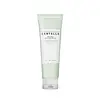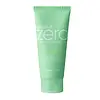What's inside
What's inside
 Key Ingredients
Key Ingredients

 Benefits
Benefits

 Concerns
Concerns

 Ingredients Side-by-side
Ingredients Side-by-side

Water
Skin ConditioningMelaleuca Alternifolia Leaf Water
AntimicrobialDipropylene Glycol
HumectantSteartrimonium Methosulfate
Cellulose
AbsorbentPropanediol
SolventCarbomer
Emulsion StabilisingMethylpropanediol
SolventPentylene Glycol
Skin ConditioningIsopropyl Alcohol
Solvent1,2-Hexanediol
Skin ConditioningButylene Glycol
HumectantGlycerin
HumectantMelaleuca Alternifolia Leaf Powder
AbrasiveC12-14 Alketh-12
EmulsifyingAcrylates/C10-30 Alkyl Acrylate Crosspolymer
Emulsion StabilisingMelaleuca Alternifolia Leaf Oil
AntioxidantCentella Asiatica Extract
CleansingChamaecyparis Obtusa Water
MaskingCaprylyl Glycol
EmollientAllantoin
Skin ConditioningPanthenol
Skin ConditioningEthylhexylglycerin
Skin ConditioningPinus Palustris Leaf Extract
TonicPhellinus Linteus Extract
Skin ConditioningDextrin
AbsorbentGardenia Florida Fruit Extract
Skin ConditioningTocopherol
Antioxidant4-Terpineol
MaskingCapryloyl Salicylic Acid
ExfoliatingGluconolactone
Skin ConditioningHyaluronic Acid
HumectantSalicylic Acid
MaskingSuccinic Acid
BufferingWater, Melaleuca Alternifolia Leaf Water, Dipropylene Glycol, Steartrimonium Methosulfate, Cellulose, Propanediol, Carbomer, Methylpropanediol, Pentylene Glycol, Isopropyl Alcohol, 1,2-Hexanediol, Butylene Glycol, Glycerin, Melaleuca Alternifolia Leaf Powder, C12-14 Alketh-12, Acrylates/C10-30 Alkyl Acrylate Crosspolymer, Melaleuca Alternifolia Leaf Oil, Centella Asiatica Extract, Chamaecyparis Obtusa Water, Caprylyl Glycol, Allantoin, Panthenol, Ethylhexylglycerin, Pinus Palustris Leaf Extract, Phellinus Linteus Extract, Dextrin, Gardenia Florida Fruit Extract, Tocopherol, 4-Terpineol, Capryloyl Salicylic Acid, Gluconolactone, Hyaluronic Acid, Salicylic Acid, Succinic Acid
Water
Skin ConditioningDipropylene Glycol
HumectantCellulose
AbsorbentIsostearamidopropyl Ethyldimonium Ethosulfate
Propylene Glycol
HumectantGlycerin
Humectant1,2-Hexanediol
Skin ConditioningCarbomer
Emulsion StabilisingAcrylates/C10-30 Alkyl Acrylate Crosspolymer
Emulsion StabilisingCaprylyl Glycol
EmollientMelaleuca Alternifolia Leaf Powder
AbrasiveC12-14 Alketh-12
EmulsifyingAllantoin
Skin ConditioningParfum
MaskingMelia Azadirachta Leaf Extract
Skin ConditioningDisodium EDTA
Melia Azadirachta Flower Extract
Skin ConditioningBetaine Salicylate
AntimicrobialCapryloyl Salicylic Acid
ExfoliatingCitric Acid
BufferingGluconolactone
Skin ConditioningSodium Citrate
BufferingSolanum Lycopersicum Fruit Extract
AntioxidantSodium Hyaluronate
HumectantCaffeine
Skin ConditioningHydroxypropyltrimonium Hyaluronate
Hydrolyzed Hyaluronic Acid
HumectantSodium Acetylated Hyaluronate
HumectantHyaluronic Acid
HumectantSodium Hyaluronate Crosspolymer
HumectantPotassium Hyaluronate
Skin ConditioningWater, Dipropylene Glycol, Cellulose, Isostearamidopropyl Ethyldimonium Ethosulfate, Propylene Glycol, Glycerin, 1,2-Hexanediol, Carbomer, Acrylates/C10-30 Alkyl Acrylate Crosspolymer, Caprylyl Glycol, Melaleuca Alternifolia Leaf Powder, C12-14 Alketh-12, Allantoin, Parfum, Melia Azadirachta Leaf Extract, Disodium EDTA, Melia Azadirachta Flower Extract, Betaine Salicylate, Capryloyl Salicylic Acid, Citric Acid, Gluconolactone, Sodium Citrate, Solanum Lycopersicum Fruit Extract, Sodium Hyaluronate, Caffeine, Hydroxypropyltrimonium Hyaluronate, Hydrolyzed Hyaluronic Acid, Sodium Acetylated Hyaluronate, Hyaluronic Acid, Sodium Hyaluronate Crosspolymer, Potassium Hyaluronate
Ingredients Explained
These ingredients are found in both products.
Ingredients higher up in an ingredient list are typically present in a larger amount.
1,2-Hexanediol is a synthetic liquid and another multi-functional powerhouse.
It is a:
- Humectant, drawing moisture into the skin
- Emollient, helping to soften skin
- Solvent, dispersing and stabilizing formulas
- Preservative booster, enhancing the antimicrobial activity of other preservatives
Acrylates/C10-30 Alkyl Acrylate Crosspolymer is a synthetic polymer. It is used to thicken and improve the texture of products. Due to its properties, it can prevent water and oil ingredients from separating.
Allantoin is a soothing ingredient known for its protective and moisturizingg properties. Because of this, it is often added to products with strong active ingredients.
Studies show higher concentrations of this ingredient can promote wound healing.
Though it can be derived from the comfrey plant, allantoin is produced synthetically for cosmetic products to ensure purity.
Learn more about AllantoinCapryloyl Salicylic Acid comes from salicylic acid, the famous acne-fighting BHA.
It usually goes by a more common name of LHA, or lipohydroxy acid.
Like salicylic acid, this ingredient is a chemical exfoliant that can help break down the oil in your pores and reduce inflammation.
Though studies for LHA do show it to be less effective than salicylic acid. To be fair, salicylic acid is the reigning monarch of acne treatments.
However, a study from 2009 found LHA to be comparable to BPO, making it a good alternative for people with sensitive skin. Another study of 14 patients found a significant decrease in comedones after using LHA.
Another pro of LHA? It is less irritating than salicylic acid due to its large molecule size.
Large molecules cannot penetrate skin as well, so they are gentler on the skin. LHA is much less penetrative than salicylic acid.
An in-vitro study (not done on a living organism) found only 6% of LHA penetrated past the statum corneum compared to 58% of salicylic acid. An in-vivo (done on a living organism) analysis revealed ~17% of LHA was still present in the top layer of skin after 4 days, versus ~9% of salicylic acid.
Interestingly, a study from 2008 found LHA comparable to another famous acid, glycolic acid.
This study found about 10% of LHA is as effective as 20-50% of glycolic acid in treating hyperpigmentation and fine-lines.
Hydroxy acids have been found to stimulate skin protein, lipids, and thermal thickening. This may have anti-aging benefits.
Learn more about Capryloyl Salicylic AcidCaprylyl Glycol is a humectant and emollient, meaning it attracts and preserves moisture.
It is a common ingredient in many products, especially those designed to hydrate skin. The primary benefits are retaining moisture, skin softening, and promoting a healthy skin barrier.
Though Caprylyl Glycol is an alcohol derived from fatty acids, it is not the kind that can dry out skin.
This ingredient is also used as a preservative to extend the life of products. It has slight antimicrobial properties.
Learn more about Caprylyl GlycolCarbomer is a polymer of acrylic acid. Its main role is to create a gel consistency.
A high amount of carbomer can cause pilling or balling up of products. Don't worry, most products contain 1% or less of carbomer.
Cellulose is the main component of plant cell walls. It is used as an emulsifier, absorbent, and texture enhancer.
This ingredient has many functions:
Fun fact: Cellulose is the most abundant form of organic polymer on Earth.
Learn more about CelluloseDipropylene Glycol is a synthetically created humectant, stabilizer, and solvent.
This ingredient helps:
Dipropylene glycol is technically an alcohol, but it belongs to the glycol family (often considered part of the ‘good’ alcohols). This means it is hydrating and gentle on skin unlike drying solvent alcohols like denatured alcohol.
As a masking agent, Dipropylene Glycol can be used to cover the smell of other ingredients. However, it does not have a scent.
Studies show Dipropylene Glycol is considered safe to use in skincare.
Learn more about Dipropylene GlycolGluconolactone is a PHA. PHAs are a great gentle alternative to traditional AHAs.
When applied, Gluconolactone has the same affect on skin as AHAs such as lactic acid. It helps dissolve the dead skin cells in the top layer of your skin. This improves texture and brightens the skin.
PHAs are more gentle than AHAs due to their larger structure. They do not penetrate as deeply as AHAs and take a longer time to dissolve dead cells. Studies show PHAs do not cause as much irritation.
Gluconolactone has some interesting properties:
In a 2004 study, Gluconolactone was found to prevent UV damage in mouse skin cells and has not been found to increase sun sensitivity. However, we still recommend wearing SPF daily.
This ingredient is is an created by reacting gluconic acid with an alcohol.
Learn more about GluconolactoneGlycerin is already naturally found in your skin. It helps moisturize and protect your skin.
A study from 2016 found glycerin to be more effective as a humectant than AHAs and hyaluronic acid.
As a humectant, it helps the skin stay hydrated by pulling moisture to your skin. The low molecular weight of glycerin allows it to pull moisture into the deeper layers of your skin.
Hydrated skin improves your skin barrier; Your skin barrier helps protect against irritants and bacteria.
Glycerin has also been found to have antimicrobial and antiviral properties. Due to these properties, glycerin is often used in wound and burn treatments.
In cosmetics, glycerin is usually derived from plants such as soybean or palm. However, it can also be sourced from animals, such as tallow or animal fat.
This ingredient is organic, colorless, odorless, and non-toxic.
Glycerin is the name for this ingredient in American English. British English uses Glycerol/Glycerine.
Learn more about GlycerinHyaluronic acid is naturally found in healthy skin. It is a humectant, meaning it draws moisture to your skin.
This ingredient helps hydrate, soothe, and protect the skin.
What makes hyaluronic acid so hydrating? It has the capacity to bind or hold large amounts of water.
Fun fact: It is already naturally found in our bodies, such as the fluids of our eyes and our joints.
Studies find this ingredient to have anti-inflammatory and anti-microbial properties. This can help speed up wound-healing.
Hyaluronic acid can be irritating if the molecule has a low-molecular weight, or if the molecules are small.
One study found low-molecular weight hyaluronic acid to be pro-inflammatory, meaning some people may experience irritation. This is because our bodies use hyaluronic acid in the wound-healing process to signal to our bodies, via irritation, that something needs healing.
The same study found high-molecular weight hyaluronic acid to be anti-inflammatory.
These are some other common types of Hyaluronic Acid:
Learn more about Hyaluronic AcidMelaleuca Alternifolia Leaf Powder is an exfoliant. It can be good for be good for oily skin.
Water. It's the most common cosmetic ingredient of all. You'll usually see it at the top of ingredient lists, meaning that it makes up the largest part of the product.
So why is it so popular? Water most often acts as a solvent - this means that it helps dissolve other ingredients into the formulation.
You'll also recognize water as that liquid we all need to stay alive. If you see this, drink a glass of water. Stay hydrated!
Learn more about WaterWe don't have a description for C12-14 Alketh-12 yet.